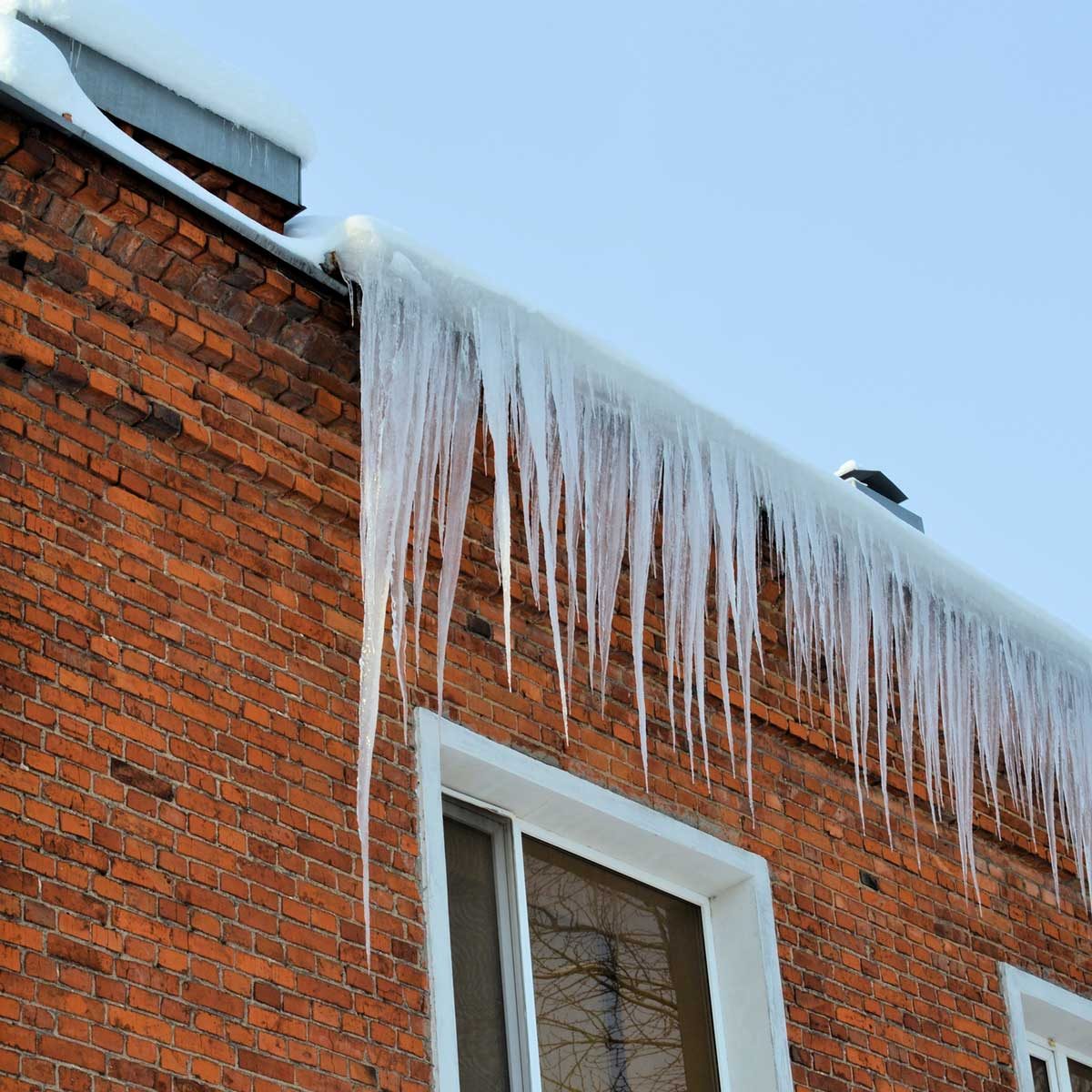Combat ice dams this winter to prevent water damage in your home.

How to Remove an Ice Dam From Your Roof

Ice dams occur when snow on a roof melts, but freezes before getting fully clear of the roof. As more snow melts it will also refreeze when it hits the new ice, slowly building up a frozen wall that pushes backward up the roof, raising shingles and sliding into unprotected roof sheathing. When a true thaw finally comes, the watery remnants of the ice dam will invade the home, damaging walls, ceilings, and whatever else it touches.
On This Page
How can you get rid of ice dams?
Here are a few ways to combat this seeping invasion.
Option 1: Attack the Snow
One way to get in front of potential ice dams is to remove the snow that causes them before it has a chance to melt. This does not involve climbing onto a snow and ice-covered roof and putting yourself at risk! Instead, use a tool designed to remove the snow from the safety of the ground. There are a number of these devices available, usually called handled roof rakes or roof shovels. Look for a model that uses a protective buffer (such as wheels or bumpers) to prevent damage to the shingles while removing bulk quantities of snow. And a telescoping handle is a must—the entire idea is to limit risk, not force you to climb onto a ladder or roof in inclement weather.
Obviously this snow removal tool has its limitations. It works best when there’s enough snow to get a hold of, but not so much that it becomes unwieldy. Also, the height of your home and profile of your roof will have to be taken into consideration.
Option 2: Warm the Eaves
Remember that ice dams originate in roof valleys and eaves, where the lower temperature freezes fresh snow melt. This means that you don’t need to attack the entire roof of snow. One popular method is to use an electrical cabling system that boosts the temperature of the eaves just enough to prevent ice dams from forming. Some people claim that putting calcium chloride ice melt (the same material used on sidewalks and driveways) in a pair of pantyhose and laying it across the eaves will prevent ice dams. We checked into this claim and found out that it’s a bust.
Apart from this ice dam pantyhose hack, DIYers have also devised other ways like roof deicing cables to deal with ice dams more safely.
Option 3: Freeze It on the Inside
This clever technique attacks ice dams from the inside. If your home is beginning to suffer the leaks indicative of an ice dam, take a fan (a box fan or small air mover) into your attic and direct it at the section of roof suffering the leak. This blast of cold air will usually be enough to refreeze the fingers of the ice dam, while the snow and ice is melting away on the outside of your home. Once that exterior pressure is relieved, the remaining ice will melt away and run off the rest of the roof. This is a great way to stop the leak in its tracks without having to wrangle any equipment outside, but it’s ultimately treating the symptoms, not the cause.
Option 4: Attack the Root Cause
Ultimately, the goal is to prevent the ice dams from forming. A thermal analysis of your attic will often reveal what’s allowing the temperature of the roof to raise higher at the edges than on the eaves. By stabilizing this temperature you can stop ice dams before they occur.
This can be done with venting, protection from interior warmth, insulation or a combination of these factors. A good starting place is to look for things like bathroom fans or dryer lines that vent into the attic instead of the outside.
Up next, check out some of the best snow and ice removal products.



















